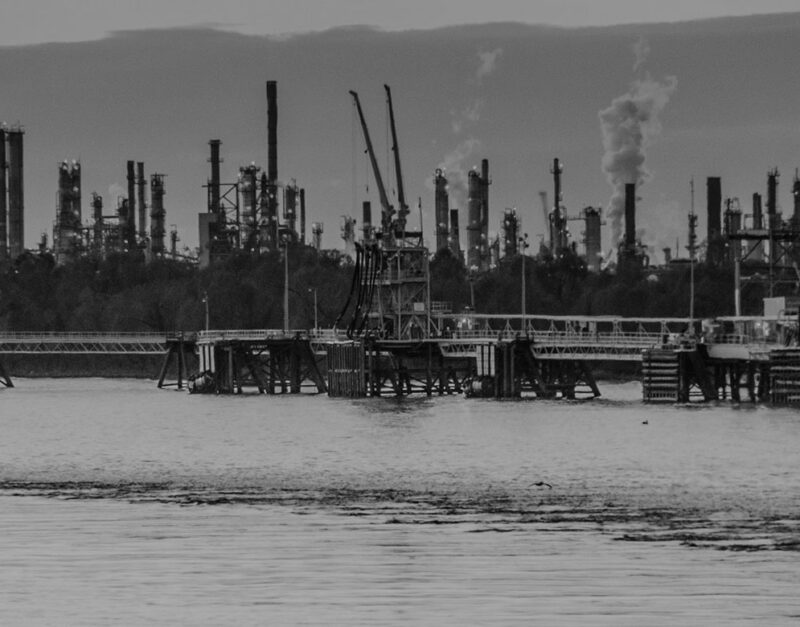 January 31, 2024
January 31, 2024 Federal authorities are cracking down on chemical manufacturers along Louisiana’s notorious “Cancer Alley” in an effort to reduce hazardous chemical emissions that pose an imminent health hazard to nearby communities.
The legal action comes after the Environmental Protection Agency (EPA) opened a series of civil rights investigations into Louisiana state agencies over permitting of chemical manufacturing facilities. The investigation examined whether permits granted along the industrial corridor known as “Cancer Alley” violated Black citizens’ rights by exposing them to high concentrations of hazardous chemicals.
Japan-based chemical manufacturer Kenka Performance Elastomer LLC has been ordered to significantly reduce its hazardous chloroprene emissions from its neoprene manufacturing facility in LaPlace, Louisiana. The legal action was taken by the U.S. Department of Justice (DOJ), on behalf of the U.S. Environmental Protection Agency (EPA) in coordination with the U.S. Attorney’s Office for the Eastern District of Louisiana. The complaint is filed under Section 303 for the Clean Air Act.
What Is Chloroprene?
Chloroprene is a liquid raw material used to produce flexible synthetic rubber. The material is used to produce goods like laptop sleeves, wetsuits, garden hoses, orthopedic braces, automobile belts and hoses, and beverage koozies.
Why Are Chloroprene Emissions Dangerous?
According to the complaint, air monitoring conducted by both the EPA and Denka over the past several years consistently revealed long-term chloroprene concentrations in the air near Denka’s LaPlace facility. The exposure was as high as 14 times recommended levels for a 70-year lifetime exposure.
In 2010, the EPA published a peer-reviewed assessment of chloroprene that concluded its emissions are “likely to be carcinogenic to humans.”
Children under age 16 are particularly vulnerable to mutagenic carcinogens like chloroprene. The EPA statement reports that “approximately 20 percent of the total population living within two-and-a-half miles of Denka are children under the age of 18, and between 800 and 1,000 are children under the age of five.” The 5th Ward Elementary School is located approximately 450 feet from Denka’s facility, and East St. John High School is roughly a mile-and-a-half north of Denka. Both schools are exposed to the facility’s chloroprene emissions.
Emissions Have Lessened, But Not Enough
The Associated Press reports that the former DuPont plant has reduced emissions over time. However, the DOJ says the plant still represents “an imminent and substantial endangerment to public health and welfare,” including elevated cancer risks. According to the lawsuit, Denka has downplayed the health threat caused by the chemical exposure. The lawsuit demands that Denka eliminate chloroprene emissions.
Black Residents More At-Risk
The EPA reported that Black residents face an increased cancer risk from chemical plant emissions and that state officials have allowed the exposure to remain too high, according to a 2022 letter to Louisiana officials that was part of an EPA probe under the Civil Rights Act of 1964.
The letter describes early findings of racial discrimination by two Louisiana agencies involving communities near the Denka plant. It says the EPA has “significant evidence suggesting that the Departments’ actions or inactions” have hurt and are hurting Black residents of St. John the Baptist Parish, St. James Parish, and other areas.
The complaint is the latest move by the Biden administration to target an 85-mile stretch from New Orleans to Baton Rouge, officially known as the Mississippi River Chemical Corridor, but more commonly called “Cancer Alley.”
The complaint also names DuPont Specialty Products USA LLC – the owner of the land beneath the Denka facility and Denka’s landlord. In a statement released in February, the EPA stated that “DuPont is a necessary party to ensure there are no delays in any actions that Denka is ordered to take to reduce chloroprene emissions as a result of the rights DuPont holds under its lease agreement with Denka.”
How We Help Victims of Toxic Exposure
The attorneys of our birth defects victims’ alliance understand the pain families face when coping with life-altering birth defects—and the frustration of knowing they could have been prevented. Our team has over 40 years of combined experience in birth defects litigation in cases involving semiconductor and electronics manufacturing, pesticides, and energy production. We have the resources and experience to fight on behalf of our clients against corporations that put them in danger. Call us to see how we can help you and your family receive justice for birth defects.


